Table of Contents
![]() About the Author
About the Author
![]() Reviews and Awards
Reviews and Awards
- Video Recovery
- SD Card Recovery
- Recycle Bin Recovery
- Recover Data from USB
- Recover Deleted Emails
- Hard Drive Not Showing Up in Windows
- Recover Unsaved Word Documents
- Recover Deleted Files
- Recover Files from Virus Infected Hard Drive
- Best Free Photo Recovery Software
- Recover Files from Formatted Hard Drive
Installation of Windows on SSD optimizes a Windows PC's performance. But what's annoying is the "Windows installation not detecting SSD" error. There are several reasons why an SSD spinning can't be detected! The common reasons are that the SDD isn't linked with the two most ordinary NTFS or FAT32 systems, which most PCs identify, and they can sometimes be shown as RAW. Another reason is there might be a physical connection, which causes errors with the connections between the PC and the drive.
Recover Data from SSD Not Detected on Windows
Have you lost your data due to this issue? When installing Windows, some files could be erased. There's also an exceptionally significant chance of data loss. Users should prioritize protecting their personal information's privacy first. Hence, the most useful tool to employ is EaseUS Data Recovery Wizard, an advanced retrieval program.
Moreover, in case your SSD is spinning but the installation of the new Windows OS can't detect the SSD, you may still retrieve data from it. A few leading software are available in the market to execute the work. But the best one is EaseUS Data Recovery Wizard, which can safely retrieve your data from your SSD.
It can be also used to create a WinPE bootable USB in case the computer refuses to load, which will allow recover data from SSD that won't boot.
The major highlights of this professional data retrieval software are the following:
- Documents can be recovered from an SD card, a USB flash drive, or a Windows PC's both internal and external storage.
- Anyone can retrieve 1000+ file types from 2000+ storage devices, including documents, videos, and photos.
- It helps recover files from corrupted SSDs and HDDs.
Step 1. Scan the SSD
Open EaseUS Data Recovery Wizard, select the SSD where you lost data, and click the "Scan" button.
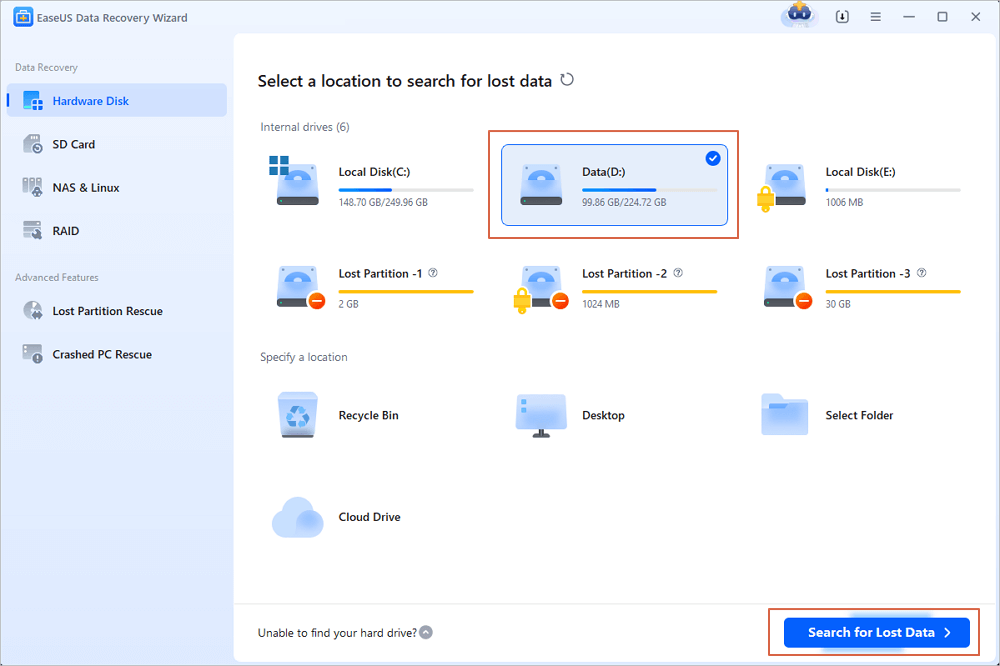
Step 2. View the results
When the scanning finishes, find lost SSD data by using the "Filter" and "Search" options after checking the "Deleted Files" and "Other Lost Files" folders.
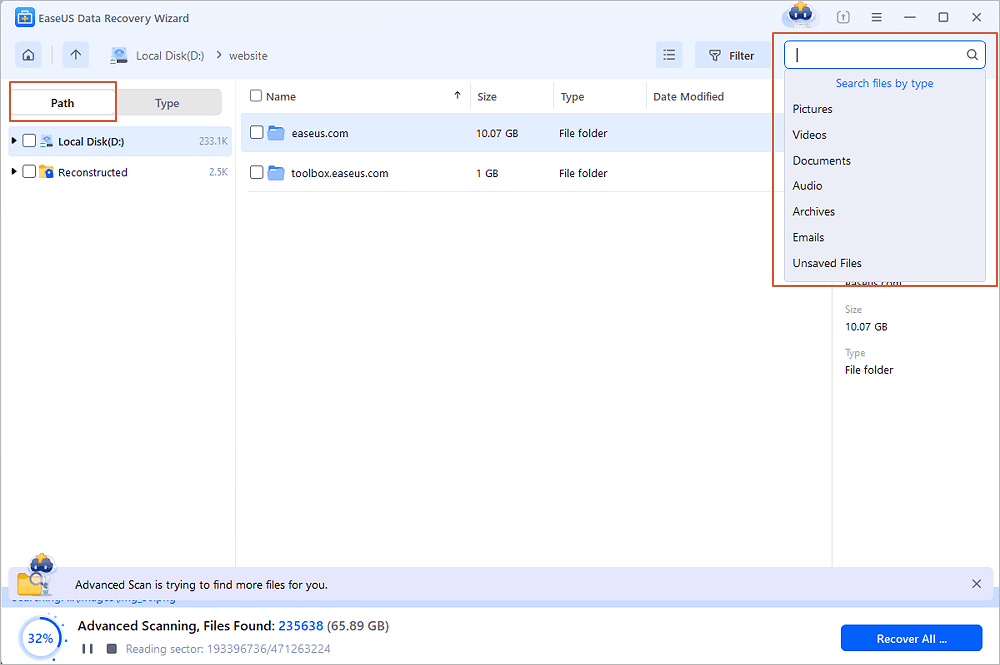
Step 3. Recover SSD files
Select desired data and click the "Recover" button to get back lost SSD files.
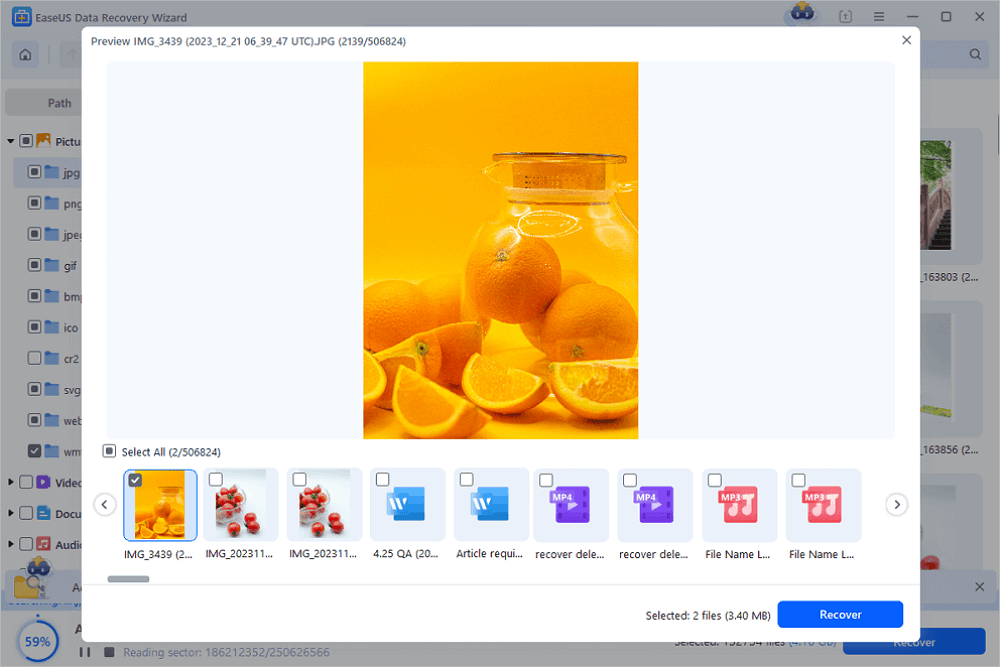
Download this professional data retrieval software now! Also, if you find this tool useful, make sure to share the information with your friends on social media.
Fix Windows Installation Not Detecting SSD [5 Ways]
When "Windows installation not detecting SSD" happens, you can't install the latest or older version of Windows OS on SSD. It's worth knowing that Windows not identifying the SSD is the main thing that you can't install Windows on a built-in SSD. So, these are the top 5 ways to fix Windows installation not detecting SSD:
- Fix 1. Switch the Boot Mode
- Fix 2. Verify the SSD Connection
- Fix 3. Clean the SSD
- Fix 4. Load Driver
- Fix 5. Update the SSD Driver
Fix 1. Switch the Boot Mode
You will obtain the Windows 11 installation not detecting SSD error in case the boot mode of the PC isn't right for the SSD. In that case, all you need to do is enter the BIOS; after that, alter the boot mode by going through the steps:
Step 1. Enter the BIOS setup screen.
Step 2. Move to the "Boot" tab on the main BIOS menu.
Step 3. Hit "UEFI/BIOS Boot Mode" under the tab, and then opt for "UEFI."
Step 4. Press the "F10" and "Enter" keys to save the alterations and exit the screen.
Fix 2. Verify the SSD Connection
Step 1. Turn your PC off and on again. Keep pressing the "BIOS" key, for example, Delete, F1/F2/F10/F11/F12, Esc to enter BIOS. The PC's BIOS key will be displayed at the bottom of the screen after the PC restarts.
Step 2. Go to your PC's "BIOS settings" and verify if the SSD is demonstrating in BIOS.
Step 3. Your BIOS's "Storage Configuration" settings are where you'll find the "SATA port" options. Make sure they're activated.
Here Are the Solutions to Fix NVME SSD Not Detected (Windows/Mac)
You can read this complete guide no matter what undetected scenarios you encounter. This guide provides you with tried-and-true solutions for you to fix NVME SSD not detected error.
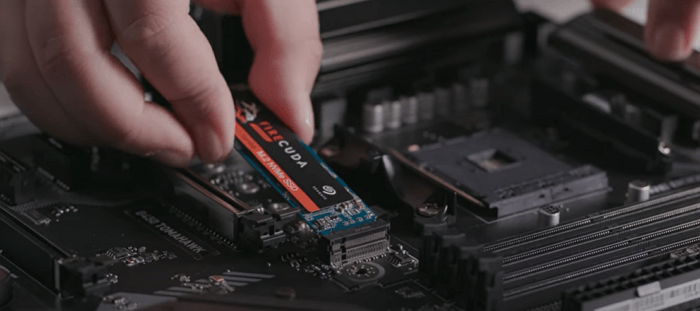
Fix 3. Clean the SSD
In case the Windows 11 install is unable to detect SSD error during the installation, these are the important steps to follow:
Step 1. Hit the "Shift + F10" keys to launch "Command Prompt."
Step 2. Type the below–mentioned commands in the Command Prompt window, and hit "Enter" after each:
- diskpart
- list disk
- select disk #, where "#" must be replaced with the number of SSD represented.
- clean all
Step 3. Now, you will notice the SSD drive at the Windows setup.
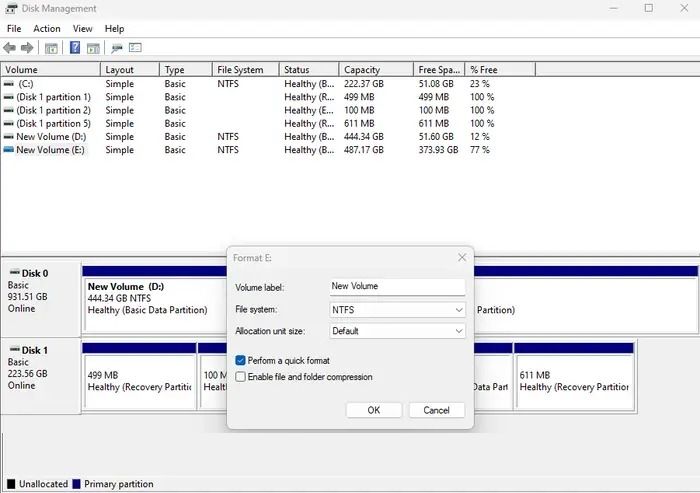
Fix 4. Load Driver
The warning message that states "We did not locate any drives" appears during failed Windows 11 installation if Windows cannot detect the SSD. Select Load driver" to obtain a storage driver. Follow the prompts and choose the Load driver option in the left corner of the Windows Setup window.
Now, you need to wait for a while and verify if Windows spots the SSD. If not, proceed to the following restoration method.
Fix 5. Update the SSD Driver
Step 1. Click and hold the Windows logo to bring up the "Start" option. Tap the "Device Manager" button after that.
Step 2. Broaden the category of "Disk Drives" by double-clicking.
Step 3. Hit the "Update Driver" option after right-clicking on the SSD driver.

Step 4. Opt for "Search automatically for drivers" in the subsequent window, and go through the on-screen prompts to update the driver.
What Causes Windows Installation Not Detecting SSD
Installing Windows 11/10/8/7 on an SSD will unquestionably increase your computer's efficiency and performance. If Windows could not be installed on an SSD, that would be a problem. However, these are the top 4 reasons for the error "Windows installation not detecting SSD":
❎SSD isn't identified by the UEFI or BIOS firmware
It happens due to faulty or loose data cables. If the NVMe or SATA data cable linking the SSD to the motherboard is corrupted or loose, the BIOS can't identify the drive.
📂Corrupted ISO file
Issues with any third-party software may corrupt the ISO file. If the system files get damaged, so does the ISO file. Therefore, a corrupted ISO file ensues this "Windows Installation Not Detecting SSD" error.
📏Improper formatting of the SSD
A newly purchased SSD drive won't appear in Windows if it hasn't been configured to a partition style. Often, disk startup is the reason why the freshly installed SSD is not detected. Windows may identify the SSD once again if the SSD is formatted to a compatible file system.
❔The essential drivers for the SSD aren't installed
In case you're using an IDE SSD, you don't have to install a driver. But if it's an SSD and the necessary drivers aren't installed, it will bring forth this issue.
To Wrap Up
SSDs and Windows 11/10 are two examples of novel innovations that you may find enjoyable due to their significant advancements over their predecessors. Any of the techniques above can help you install the latest OS on your new SSD. But if "SSD not detected on Windows" happens, and it leads to data loss, EaseUS Data Recovery Wizard will be an effective tool to install.
Windows Installation Not Detecting SSD FAQs
These are the FAQs to consider in order to understand the topic better:
1. Why is Windows not detecting my SSD during installation?
The reason might be having a poor SSD cable connection. It's possible that your computer isn't configured to detect fresh SSDs. Verifying using the UEFI/BIOS may represent a useful method.
2. How do I fix SSD not detected in Windows?
In that case, you need to update the SSD drivers with the help of these steps:
- Hit the "Win + X" keys, and opt for "Device Manager."
- Search for "Disk Drives" and broaden the "Disk Drives" category.
- Update by right-clicking on the SSD and opting for "Update Driver" to continue.
- Opt for "Search automatically for updated driver software" and go through the on-screen instructions to download any updates.
3. Why is my SSD not showing up in BIOS after Windows installation?
The BIOS will not recognize an SSD if the data cable is broken or the link is made incorrectly. Particularly with serial ATA cables, connections can occasionally get loose.
4. Why is Windows installed not booting from an SSD?
The SSD is unable to boot due to the wrong boot mode. In order to configure it to start in EFI/UEFI mode, you must access BIOS Setup. If not, the SSD can only be used for booting once it has been reformatted to an MBR drive.
Was This Page Helpful?
Jaden is one of the editors of EaseUS who lives and works in Chengdu, China. She focuses on topics concerning PCs and Mac data recovery. Jaden is committed to enhancing professional IT knowledge and writing abilities. She is always keen on new and intelligent products.
-
EaseUS Data Recovery Wizard is a powerful system recovery software, designed to enable you to recover files you’ve deleted accidentally, potentially lost to malware or an entire hard drive partition.
Read More -
EaseUS Data Recovery Wizard is the best we have seen. It's far from perfect, partly because today's advanced disk technology makes data-recovery more difficult than it was with the simpler technology of the past.
Read More -
EaseUS Data Recovery Wizard Pro has a reputation as one of the best data recovery software programs on the market. It comes with a selection of advanced features, including partition recovery, formatted drive restoration, and corrupted file repair.
Read More
Related Articles
-
How to Fix a Slow WD External Hard Drive Without Losing Data
![author icon]() Jean/2023/11/08
Jean/2023/11/08 -
Fix Seagate External Hard Drive Not Working Without Losing Data
![author icon]() Tracy King/2023/12/27
Tracy King/2023/12/27 -
How to Fix External Hard Drive Keeps Disconnecting on Windows 10
![author icon]() Jaden/2024/04/09
Jaden/2024/04/09 -
USB Port Not Working? Here's How to Fix It!
![author icon]() Tracy King/2023/11/08
Tracy King/2023/11/08